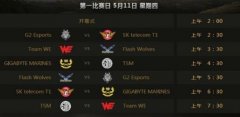地理中讲的经济腹地小是什么意思,影响腹地的因素有哪些
经济腹地是一个与经济中心或中心城市相对应的概念。其内涵是经济中心的吸收和辐射能力能够达到并能促进其经济发展的地域范围。如果没有经济腹地,经济中心也就失去了赖以存在的基础,而没有经济腹地,也就无所谓经济中心。以上海为例,其狭域经济腹地是上海市域,而其广域经济腹地则是整个长江三角洲地区。经济腹地是产业链赖以形成的基础,二者唇齿相依。 例如:珠江三角洲,其经济腹地狭小就成了经济发展的限制性因素。
请解释一下,什么叫做经济腹地?
经济腹地是经济中心的吸收和辐射能力能够达到并能促进其经济发展的地域范围,指具有经济中心功能的强辐射区域,具体来讲就是经济中心或者交通枢纽的主要辐射和服务的区域。经济中心、经济腹地和经济网络构成了一个完整的经济区。经济中心城市离不开腹地,与腹地的发展相辅相成,腹地是经济中心城市高速发展的重要支撑。腹地对经济中心城市的影响取决于腹地的规模、经济发展水平和联系的紧密度。扩展资料:案例:淮河流域淮河流域,已形成了三大城市经济圈:一是以蚌埠为中心的城市经济圈,二是以徐州为中心的城市经济圈,三是以郑州为中心的城市经济圈。蚌埠市位于淮河干流与京沪铁路的交汇点,是淮河流域皖北地区的首位城市,向来就是淮河中游两岸和皖北地区的经济中心;徐州市位于淮河流域中部的苏皖鲁三省交汇处,为京沪铁路与陇海铁路的交汇点,是南京与济南之间的首位城市,向来是淮海地区的交通枢纽和经济中心。郑州市是河南省省会和经济中心,位于淮河流域的西北部,京广铁路与陇海铁路在此交汇,河南省境内的淮河流域地区都在郑州市的辐射与吸引范围之内,是淮河上游流域的经济中心。蚌埠、徐州、郑州三大中心城市各与相邻的中小城市乃至小城镇形成了联系密切的经济网络和经济圈。参考资料来源:百度百科——经济腹地
龙腾世纪3审判Hinterland巨龙怎么打
1.普通攻击,近战范围对目标猛咬一口,可以格挡,伤害对剑盾战忽略不计.对盗贼法师是相当恐怖的,所以龙头近战范围贼法别去.
2.前爪扫击Ⅰ,用前爪对前方范围攻击,带击倒效果,可以格挡,处理和普通攻击一样.
3.前爪扫击Ⅱ,在侧面有敌人攻击龙时会用,用前爪对身体两侧范围攻击,带击倒效果,攻击时前爪会抬起,提示动作很明显,盾墙格挡翻滚消失轻松应对.
4.后腿攻击,通常有人在背后攻击龙时使用,应对方法和前爪攻击一样.
5.扫尾.尾部站人是会用,范围较大,带击飞,远程站位远离尾部即可.
6.振翅,扑打翅膀产生狂风,离龙较远的目标会受到伤害,龙使用此技能时所有人跑向巨龙即可,技能结束后远程要记得远离站位.
7.火球术,单体魔法技能带DOT,盾墙翻滚消失可躲,法师只能硬吃了.
8.火焰吐息,减员技能.施放技能前龙口会冒烟,并有龙头后仰深呼吸动作,火焰从远至近喷吐,远程必须反方向跑,侧向移动无效,近战范围角色向龙跑,此技能不会往龙近战范围施放(这不是要烧到龙自己么),所以近战对此技能无压力.
龙腾世纪3审判巨龙的地点位置在哪
除开主线一共有10条龙可以打 分别在 辛特兰 翡翠墓地 高贵平原(注意这里的冰蜿龙 在做薇薇安任务之前不能杀 不然出发了任务 就达不到冰蜿龙之心了) 雄狮之握(3条 最后一条是本作本体中最强 23级高地龙) 嘈杂废墟(在最后的矮人墓穴门口) 西部要塞(要做很多前置任务) 风暴海岸 (要解锁地图) 还有克里斯伍德(这个图是需要任务解锁的 似乎要20点 审判官power) 直接看这个页面吧http://pc.yzz.cn/skills/201412/892257.shtml
求 关于 美国 新奥尔良 的 英文 简介
下面是一些基本的介绍,要想看更多的话,看http://en.wikipedia.org/wiki/New_Orleans
另外推荐
http://www.wikipedia.org
一个非常好的在线百科全书,极力推荐!!
New Orleans is a major United States port city and historically the largest city in the U.S. state of Louisiana. It is in southeastern Louisiana along the Mississippi River, just south of Lake Pontchartrain, and is coextensive with Orleans Parish. New Orleans is named after the historical Duke of Orléans, Regent of France, and is one of the oldest and most historic cities in the United States.
New Orleans is a Southern city known for its multicultural heritage (especially French, Spanish and African American influences) as well as its music and cuisine. It is a world-famous tourist destination thanks to its many festivals and celebrations; the most noteworthy annual events are Mardi Gras ("Fat Tuesday"), Jazz Fest, Essence Festival (moved to Houston, Texas for 2006), Voodoo Fest, Southern Decadence, and college football's Bayou Classic (moved to Houston, Texas for 2005) and Sugar Bowl (moved to Atlanta, Georgia for 2006).
The most recent U.S. census put New Orleans' population at 484,674 and the population of Greater New Orleans at 1,337,726. Since Hurricane Katrina devastated the city in August 2005, the population has been significantly lower, due to the majority of surviving residents either taking temporary shelter elsewhere or relocating indefinitely. A survey conducted by the city's Emergency Operations Center in January 2006, estimated the population at between 160,000 and 202,000 residents in the city.[1] Projections of the city's eventual population following reconstruction are highly speculative.
As of mid-March 2006, efforts continue to aid survivors, clean up debris, and restore infrastructure. While most of the city has reopened to residents, and areas which suffered moderate damage have substantially resumed functioning, the parts of town most severely damaged - such as some neighborhoods of the lower 9th Ward - are open only during daylight hours for residents to salvage items from their formerly flooded homes.
New Orleans remains a major port city due to its location near the Gulf of Mexico and along the Mississippi River, making it a hub for goods which travel to and from Latin America. The petroleum industry is also of great importance to the New Orleans economy; many oil rigs are located in the Gulf. The Port of New Orleans is the largest U.S. port for several major commodities including rubber, cement and coffee.[citation needed] The Port of South Louisiana is based in the New Orleans metropolitan area and has been ranked the fifth largest port in the world in terms of raw tonnage, and among the largest U.S. ports for exporting grain. The two ports together would be the fourth largest port in the world.[citation needed]
New Orleans was founded by the French in 1718 and has played an important role in the history of the United States. The city was named in honor of Philip II, Duke of Orléans, who was regent and ruler of France when the city was founded (much as New York was named in honor of James, Duke of York, heir to the throne of England).
The city's several nicknames describe various characteristics of the city, including the "Crescent City" (describing its shape around the Mississippi River), "The Big Easy" (a reference by musicians to the relative ease of finding work in the city) and "The City that Care Forgot" (associated with the easy going, carefree nature of many of the local residents). The city's unofficial motto, "Laissez les bons temps rouler" ("Let the good times roll") describes the party-like attitude of many residents.
The city's name is often abbreviated NOLA. Residents of the city are referred to as New Orleanians.




